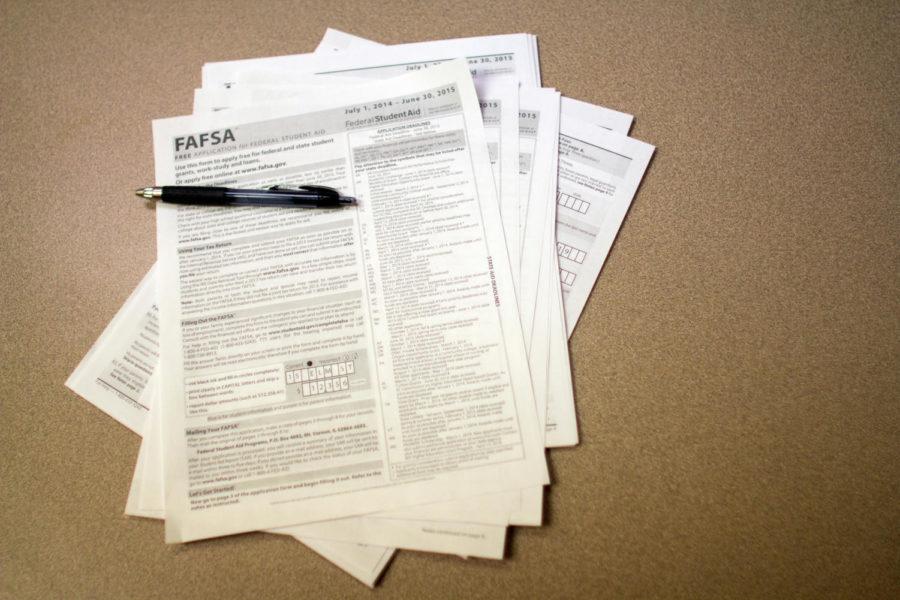Woods: FAFSA good or bad, you decide
With the FAFSA deadlines fast approaching, columnist Woods weighs the benefits of filing for aid against the hassle of filling out the forms.
January 14, 2015
Money is on the minds of just about everyone, all the time. It especially takes center stage when paying for tuition is on the line. Some are fortunate enough to be awarded scholarships, and those awarded scholarships are few and far between. Only 10.6 percent, or one of every 10 students received scholarships on average in 2007-08, according to FinAid.org. That is a very limited group of people who get to partake in the coveted gift of free money. The other 89.4 percent have to figure something else out, like student loans.
It isn’t just a walk in the park to get a loan. There is a lot of information required and papers to fill out to finally get the funds for your college education. A lot of the financial assistance is given by the federal government and with that comes the requirement of a FAFSA form, which has to be filed before any such help can be given. Now, for first timers, this could be a lot to take in and could be a nuisance to parents to have to fill out tax information for the FAFSA. Unfortunately, it is the only way you can receive help from the federal government.
The FAFSA prototype was developed in 1953, created by John Monro of Harvard University. It took about 40 years for the formula to be called the Free Application for Federal Student Aid, the name by which we know it today. The federal government uses this form to figure out if the applicant qualifies for special financial assistance.
If you do qualify for special financial assistance, or a subsidized loan, you receive special relief from paying your loans interest while you are in school. The Board of Education takes care of the cost up until the last day of your six month grace period following graduation, but then you have to take full responsibly for the loan. So be careful what you wish for. It may be nice to think you have money that is paying for everything, but you just can’t forget that money has to be paid back.
For those who do not qualify for the special financial assistance, or an unsubsidized loan, the interest that is put on your loan — about 4.66 percent, according to the Iowa State website — has to be paid by you while you are in school. It also has to be paid during other periods, like summer and the six months after you graduate. Otherwise, the interest accumulates and is tacked onto the total loan amount that you owe after the grace period is over.
For a lot of people, the amount of money borrowed is a big deal. ISU students are handling more than $30,000 in debt after graduation, according to the Iowa State website. Qualifying through a FAFSA form for the special financial assistance also qualifies you for different grants that make your tuition cheaper, so you are in turn taking out fewer loans. Those who do not qualify have to take out the full amount needed to fund his or her education in loans.
The reason some may not qualify for the special financial assistance is because of his or her parent’s income. I think it is silly for the federal government to think that just because a certain child’s parents are making enough money to fund his or her education that the parents will do it. It becomes a sticky situation for a student who is still considered a dependent of his or her parent and does not qualify for the special financial assistance, and who still has to take out a large portion of loans in order to fund his or her education because his or her parents won’t fund it for them.
That isn’t a bash on parents because every family has their way of dealing with life situations. Parents could be using college as a learning experience for their kid and paying for their education isn’t a part of the plan. It would just be nice if the federal government had some understanding that even if a student doesn’t qualify for the special financial assistance, it does not automatically mean that he or she does not need it.







